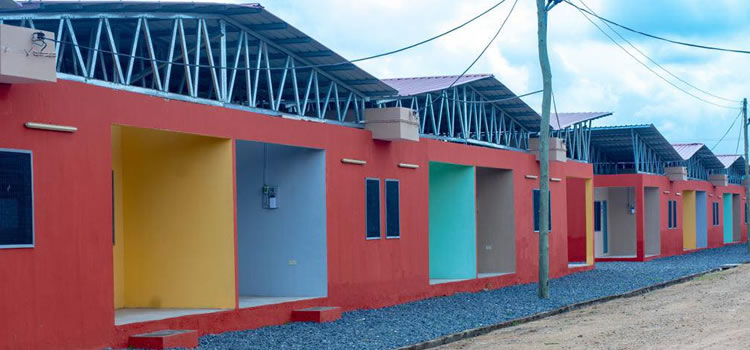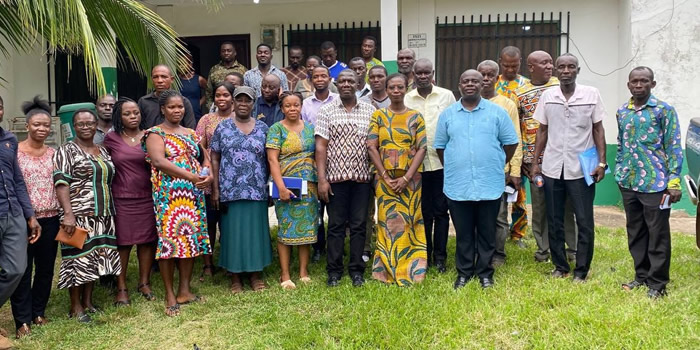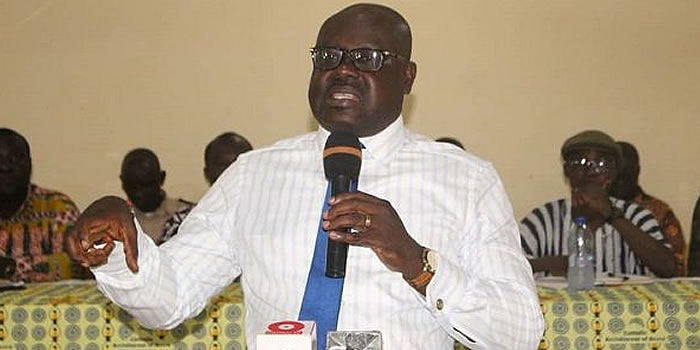

Latest census figures from Ghana Statistical Service (2000) indicate that there are 96,809 persons within the district. Out of this, 46,550 (48.2%) are males and 50,259(51.8%) are females. Based on this figure and the current district growth rate of 2.1% per annum, it is estimated that the population of the district presently stands at 107,532. This annual growth rate (2.1%) has not changed over the last three censual periods (1970, 1984 and 2000). With relative stability in fertility rates and the appreciable reduction in death rates nationwide, the general expectation was that the district would record an increase in the population given the availability of land. This did not happen due to the inadequate number of secondary and tertiary activities/facilities and the stagnation in agriculture production and productivity. These are pull factors that attract population into regions.
The district’s proximity to Accra, the national capital and Tema, the harbour and industrial city helps in elasticizing the pull of population from the district. Since the last development plan, a new feature that has come to bear on the district’s population is the invasion of estate developers into the district.
Availability of cheap agricultural lands is forcing these developers into converting the district into dormitory towns for workers in Accra. This is going to have a profound impact on the population of the district sooner or later .Again some of the major interventions of the agriculture led Millennium Challenge Account (Ghana) programme are the construction of a pack houses at Agomeda and the development of educational, health and other social infrastructure. These are expected to attract labour into the district and alter the demographic pattern in the district.
Population Size and Growth Rate
The total population of Shai Osudoku District has increased over the years. According to the 1960, 1970, 1984 and 2000 population census reports the population increased from 42,837 (in 1960) through 63, 125 (in 1970), 70, 369 (in 1984) to 96,809 (in 2000). This shows a population growth rate of 2.1 percent for the periods 1960 to 1970, 1970 to 1984 and 1984 to 2000. The intercensal growth rate for 1970 to 1984 is far below the national average estimated for the same period of 2.6 percent, depicting the fact that the district is losing its historical importance of a commercial district and thus becoming less attractive and so out-migration is likely to be quite high.
The 2000 population census report revealed that the District share of Ghana’s total population is only 3.3% .More than half the population here is natives born in the enumeration area. Persons born in the Eastern Region pre-dominates population born outside the enumeration area. Next to Eastern Region, the second largest proportion of inter-regional migrants into Shai Osudoku, Central and Ashanti. Out-migration is more prominent in the Shai local area where between 1960 and 1970 a negative growth rate of 0.8 percent, per annum was recorded. Table 1.2 below shows the total population of the district between the 1960, 1970, 1984 and 2000 censuses.
This high percentage denotes that increased supply of technical and social infrastructure (especially those related to education and health) would be required to cope with extra demands of the dependent population. In 2000, 43% of persons over 6 years in the District have never been to school, while 50% of persons above 15 years were not literate. However this picture is different now especially with the introduction of the capitation grant and the school feeding programme as the numbers kept swelling up at the time of writing this report.
Household Size
The average household size of the district as at year 2000 is 5.2 persons even though female adolescent (15-19 years) here have much higher fertility than that of Accra Metropolitan Assembly, Ga West and Ga East Municipalities and Tema Metro Assembly. This is supported by evidence based on life time fertility. The mean number of children born to adolescent (15-19) years in Shai Osudoku (0.216) is higher than the regional average of (0.090). This larger average household size (44.9%) has implications for housing policy and housing development in the district.
Rural/Urban Split
The Shai Osudoku District can be described as more rural, than urban. According to the 2000 population and housing census, as many as 73,959 people (76.4%) live in the rural areas; whiles 22,850 people (23.6%) live in the urban areas. However, the proportion of population living in urban areas has (on the basis of the historical growth rates of various settlements) increased from 32 per cent to 35.5 per cent in 2005 and expected to reach about 40% by the end of the planned period. This increased proportion would result from the increase in the population of existing urban centres and also from other settlements like New Ningo and Afienya which are becoming urban.
Age-Sex Structure of the population
The age structure of the population influences such factors as fertility, mortality, migration, dependency ration, potential output per head, youth connected problems, and problems connected with ageing. As shown in table 3.3.2, the age structure of the district is a characteristic of population experiencing rapid growth. The proportion of persons less than 15 years is above 40 percent. Similarly, the age-dependency ratio in the district is calculated to be about 102.3. This high dependency ratio is partly attributed to a reflection of relatively higher fertility which also implies a higher dependency burden for the working population in the district.
Environmental Situation
Interaction between the physical and the natural environment has revealed remarkable changes over the years. The natural environment as at the creation of the district in 1998 has suffered a remarkable degradation.
Gravel Pits: Sand winning and the digging of gravel pits scattered around Ayikuma, Mampong-shai, Fiankonya and even Dodowa has given rise to the removal of the top soils without any plans to reclaim the land. In fact reclamation of land is not as aggressive as the degradation. Wind and rain water erosion has created a lot of havoc to the environment. Large pools of stagnant water with the inevitable mosquitoes, malaria, and other related diseases abound in these areas. This phenomenon has led to the situation where agricultural lands are seriously being threatened .
The major tree species in the forest are acacia species, neem tree, eucalyptus, teak, leucenia species, mahogany and other local species. In addition, forest conservation measures are being practiced using the. Taungya system in which farmers are encouraged to clear the land and plant their crop and then the department comes in to plant trees. The main problems with the afforestation programme are stealing of forest resources and lack of well-equipped forest rangers to fight fire outbreaks.
The Green Belt
The Southeast Green Belt is a scheme that affects parts of the areas of Ga East Municipal, Shai Osudoku District, Akwapem North Municipal and Akwapim South District Assemblies. The scheme, by and large, covers the hills extending from McCarthy Hill in Accra to the Akwapem range and up to and inclusive of Dawhenya.
The scheme seeks in the main to provide land uses and interim planning controls generally in the Green Belt designated areas. It also seeks to promote sound environmental protection and sustainable human settlement development.
The scheme also outlines indicatively residential, agricultural and natural reserve areas, as well as land use restrictions and enforcement schedules. The implication for development in the Green Belt designated areas are such that special permits would have to be obtained for all kinds of development that fall within the Green Belt.
Date Created : 11/24/2017 2:06:54 AM











 facebook
facebook
 twitter
twitter
 Youtube
Youtube
 +233 593 831 280
+233 593 831 280 0800 430 430
0800 430 430 GPS: GE-231-4383
GPS: GE-231-4383 info@ghanadistricts.com
info@ghanadistricts.com Box GP1044, Accra, Ghana
Box GP1044, Accra, Ghana